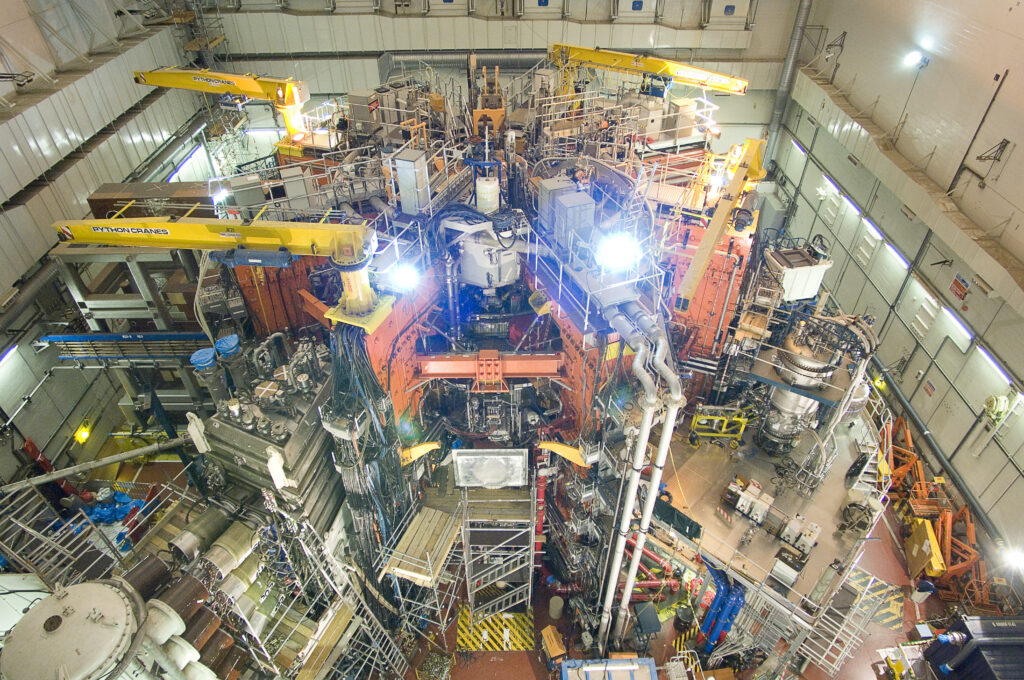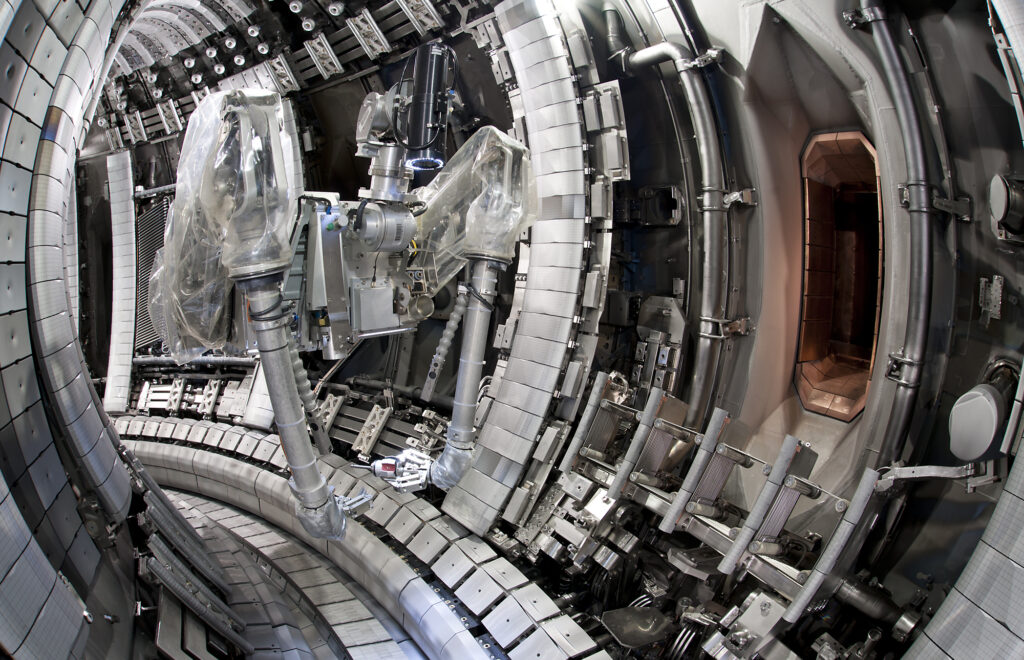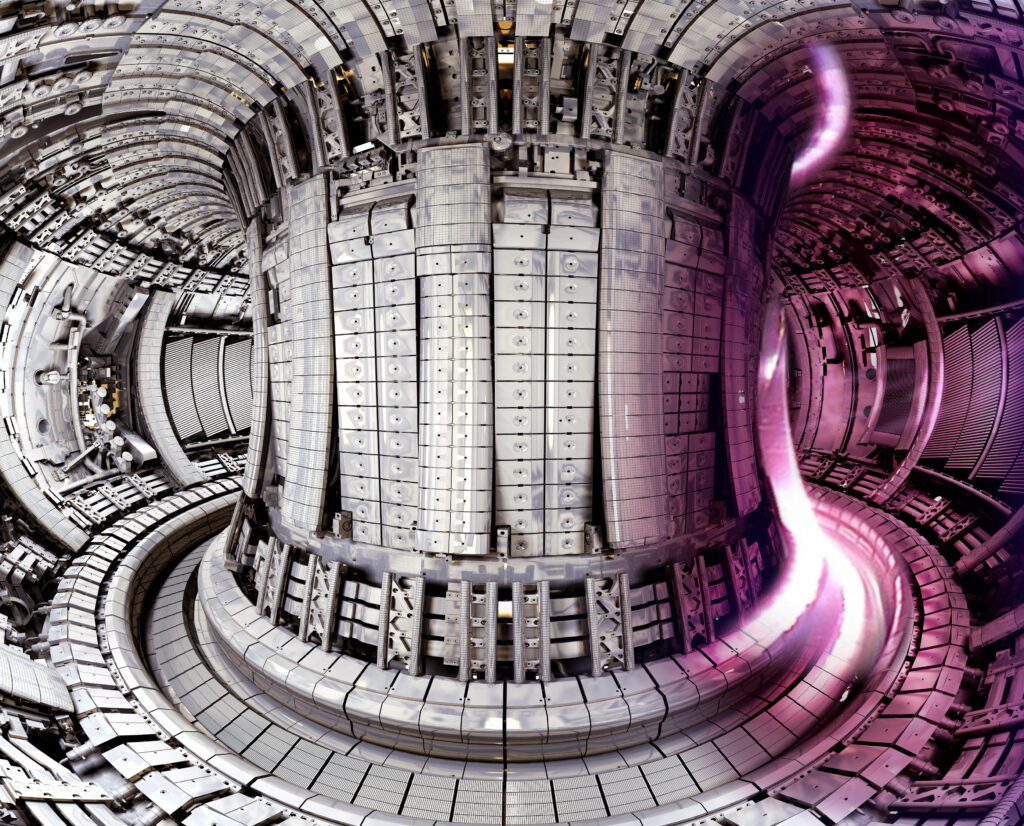Real nuclear fusion took place in the joint European tokamak device JET in its DTE2 campaign last year, fusing a mixture of deuterium (D) and tritium (T). This fuel mix of hydrogen isotopes provides the most fusion energy at the lowest operating temperature and will also be used in future fusion power plants.
Because JET is the only facility of its kind that can already operate with the so-called D-T mix, these experiments are the first time since JET’s previous D-T-campaign in 1997, a full generation of scientists ago, that fusion researchers have had the opportunity to experiment with D-T. The next time will be in in the international fusion project ITER when it starts its own D-T operations around 2035. How does the fusion community bridge those intervals?
Building up experience
‘Of course each young physicist working on a tokamak has their own expertise’, says Costanza Maggi, one of the taskforce leaders responsible for leading the current campaign. ‘They are responsible for a measurement within the experiment, or they are being trained to be a session leader in the control room. Young recruits are trained by more experienced session leaders or counterparts, so their experience is gradually built up and passed on.’
This is, of course, the way it goes everywhere in science, where a professor advises a student, and a postdoc works with a PhD, solving problems and teaching at the same time. The knowledge is also available as scientific results, reported in journals like Nuclear Fusion, in detailed reports, of in textbooks.
Applying this to a D-T fusion experiment is not fundamentally different, says Maggi. ‘The basic skills for running D-T are are the same for running a deuterium of hydrogen plasma.’ Nevertheless, several things make the real fusion campaigns unique: radioactive tritium is used, and large numbers neutrons are produced, so additional safety procedures are necessary and many other operations become more complicated due to the fact that access to the tokamak is severely restricted.
Hands-on experience
Similar issues will appear when ITER comes online, says Alberto Loarte, head of the science division of ITER. ‘Technical reports and instructions can only bring the new generation so far. You need hands-on experience. For this kind of experiments it is important to get a feeling for handling the machine.’
This, says Loarte, is why it is important to keep a range of experimental facilities, from small tokamaks and fusion experiments in national labs to large ones like JET and, eventually ITER. This provides education and training opportunities, including room for mistakes.
Loarte: ‘You cannot start learning to do plasma discharges on machines JET or ITER. Time on these facilities is extremely expensive, and these tokamaks have larger plasma currents, energies, physical forces, so mistakes can easily lead to damage.’ Magnetic forces on the structural components in JET can reach 600 tonnes (and even more in ITER) and in the past, parts of the JET’s wall have melted due to plasma disruptions. Loarte: ‘People who are learning the ropes, are going to make mistakes, that is certain. But the consequences are much less severe in smaller experimental machines.’
Fusion community for ITER
Although ITER now has only around twenty scientists on its own staff, it depends heavily on the community of scientists at other facilities and institutes worldwide. Experimental scientists are organised in ITER Tokamak Physics Activity (ITPA) network. Loarte: ’They have several working groups that can provide provide feedback between the needs that we see and experimental results. This network has grown from one group in the late eighties to a vast resource.’ A similar network exists for modelling.
The fusion community regularly meets in conferences or lectures, and switches positions between institutes. It is this community that ITER will depend on when its staff will have to grow tenfold once it comes online around 2035. ‘The first years, it will be run with hydrogen, deuterium and helium’, says Loarte, ‘Many of the scientists coming in then are early career scientists now: postdocs, PhD students or even students.’ Only later will ITER switch to D-T and produce fusion reactions at a large scale.
New generation
Patience has always been a virtue for scientists involved in the decades long project of nuclear fusion. ‘Previous generations provided the input and the confidence that we can design and construct a machine like ITER’, says Loarte, ‘My generation have been involved in the construction and in defining how to use it. And although we will probably be around the start of ITER, the real fusion part really belongs to a new generation of fusion scientists.’
Maggi, in contrast with Loarte, doesn’t expect to be involved when ITER starts. ‘The first years will be about plasma operation and control, and this is not really my field. And no, I’m not worried or dismayed by that. It is the nature of things, and I think the fact that ITER is being constructed is really inspiring.
‘Before the pandemic, I have visited ITER a couple of times, once with only a month in between, and it was really striking to see that new parts had already been added in this short time. That was very striking. It is becoming a reality.’



